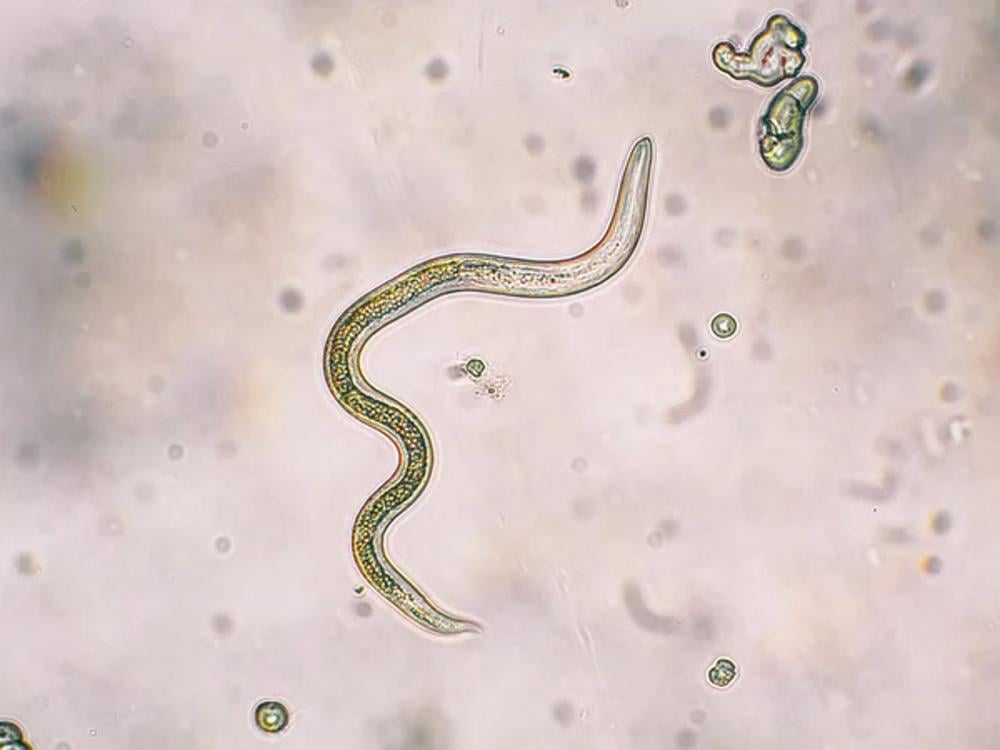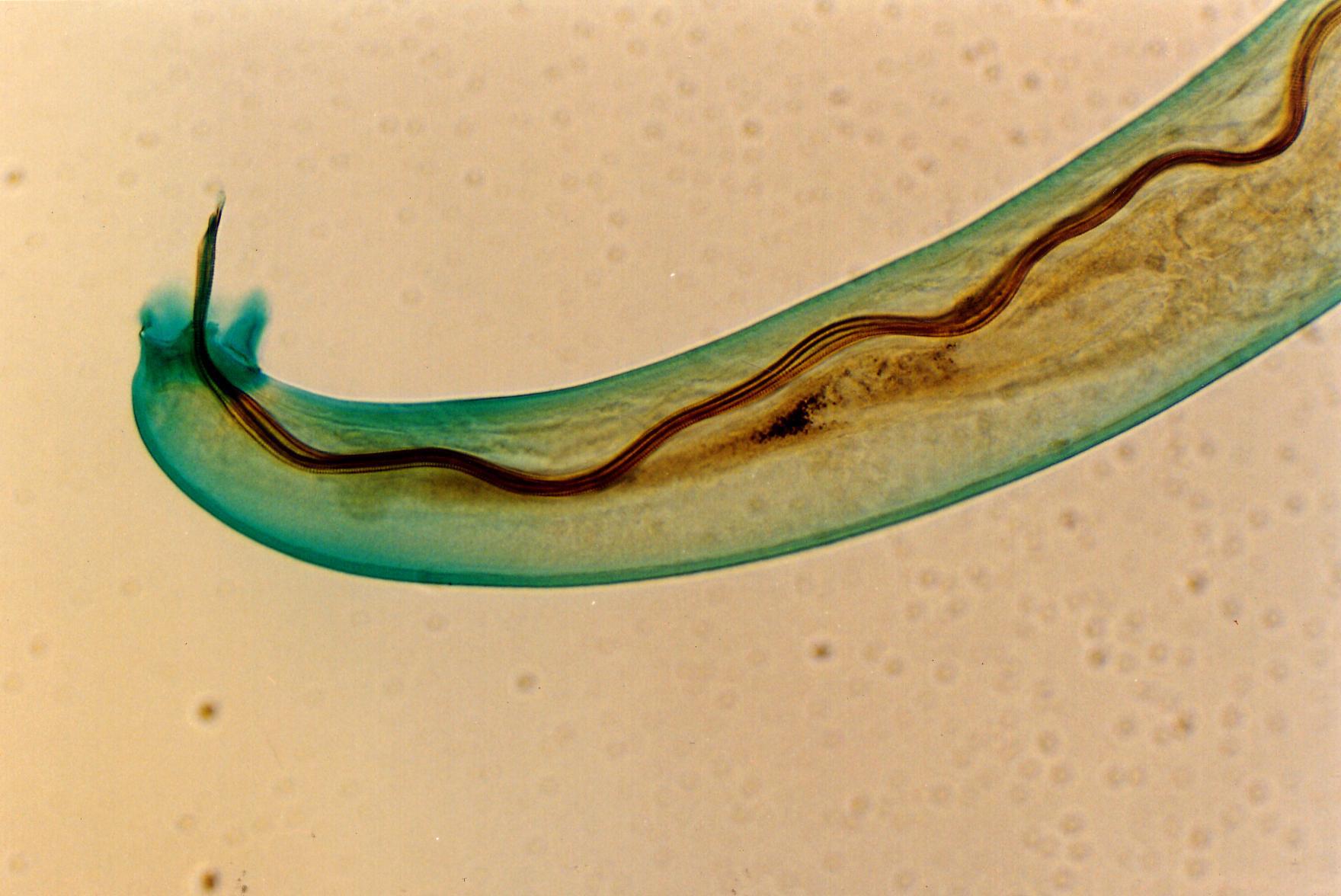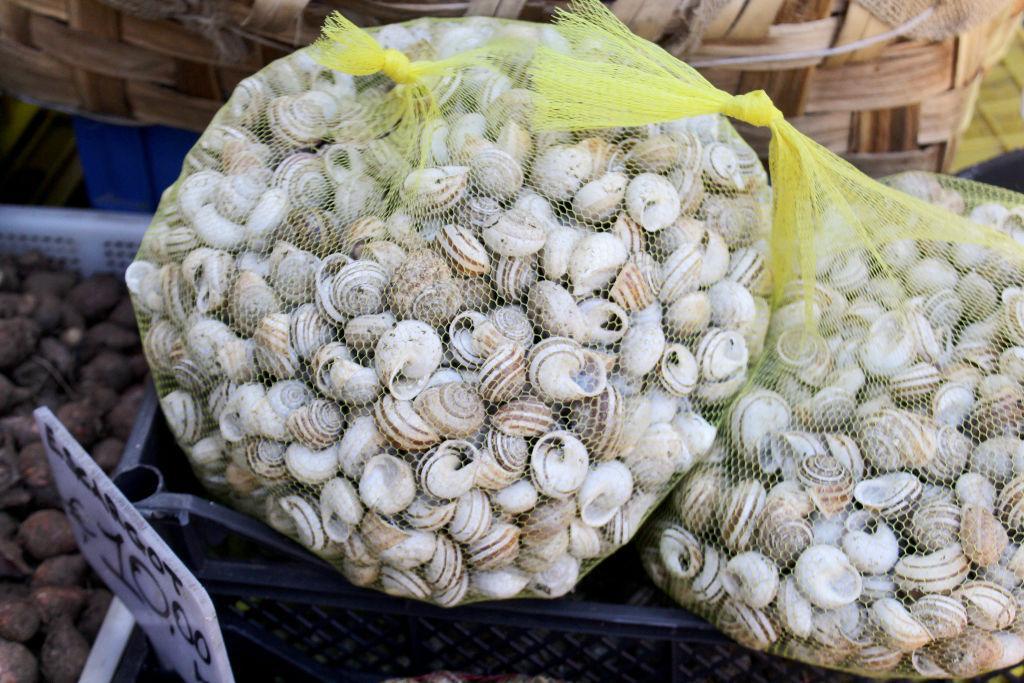A Parasitic Worm That Burrows in Brains is Spreading Across the Southeastern U.S.
An invasive parasite known as the rat lungworm has made its way to the Southeastern region of the United States.
The parasite is spread through fresh produce, snails, and other bugs, and when ingested, it can attack the brain, causing mild to severe symptoms.
What Is Rat Lungworm?
Rat lungworm or Angiostrongylus cantonensis, is an intrusive parasite that can cause infection in the brain.

Source: Depositphotos
While the parasite may not travel to the brain and instead, simply pass through the digestional tract with the food it entered in, it can infect the brain and cause mild symptoms, meningitis, or even coma or death.
How Is Rat Lungworm Contracted?
It’s important to understand that rat lungworm is not contagious in that it cannot be passed from human to human.

Source: Matt Cardy/Getty Images
The only way for a human to contract this parasite is to ingest it through eating unwashed produce, slugs, or snails, that contain the parasite itself.
The Life Cycle of Rat Lungworm
As the name suggests, rat lungworm forms in the lungs of rats. The parasites lay larva in the lungs of these rats, and when the rats excrete them in their feces, gastropods such as snails and slugs eat the parasites.

Source: Sean Gallup/Getty Images
The infected snails and slugs can pass the parasite on when they are eaten by another animal, or left behind on produce while it’s growing or being transported to supermarkets around the world.
How the Parasite Spreads
Essentially, this means that the only way a person or another animal could become infected with rat lungworm is through eating infected snails, slugs, or produce.

Source: Alexander Joerner/Getty Images
In other words, the parasite cannot be “spread” like a virus, but that doesn’t mean it’s not still quite dangerous.
Rat Lungworm Symptoms
Many people never realize that they had the rat lungworm parasite as they were never infected and had no symptoms.

Source: CDC
However, if the parasite does move to the brain, or sometimes the spinal cord, eyes, or lungs, the little worm can “cause tremendous inflammation, leading to symptoms like nausea, vomiting, neck stiffness, headaches, sometimes arm and leg tingling,” explained Professor of Pathology at the University of Georgia College, Nicole Gottdenker.
How Long Do the Symptoms Last?
In some cases, the symptoms can set in just hours after ingesting rat lungworm. But for others, it may lay dormant for several weeks before signs of infection and illness.

Source: Depositphotos
For those that are experiencing symptoms such as headaches, muscle pain, fatigue, and insomnia, it’s highly likely that they will only feel unwell for two to eight weeks.
Most People Pass the Parasite Within 2 Months
If rat lungworm symptoms do appear, doctors can test for the parasite. However, in almost every case, the parasites will die on their own in the body and after two months, all symptoms will disappear.

Source: Wikipedia
That being said, in some cases, the infection to the brain can cause meningitis, which could be fatal. It’s essential that anyone experiencing these symptoms visit their doctor immediately to plan the appropriate course of action with a medical professional.
Why Is the CDC Worried?
Although in most cases rat lungworm will not cause aggressive symptoms, let alone threaten anyone’s life, the CDC (Center for Disease Control) is still keeping an eye on it as cases have increased across the Southeastern states.

Source: Getty Images
Previously, the parasite was only found in Southeast Asia and the Pacific Islands, but this year, there have been cases in Florida, Texas, Louisiana, Alabama, and now, Georgia.
Extensive Research Is Being Conducted
The CDC and various other pathologists are working hard to better understand this parasite in order to keep people safe.

Source: Matthew Horwood/Getty Images
Pathologist Nicole Gottdenker explained, “We need to understand more about the ecology of the parasite as it spreads and how it interacts with people, domestic animals, animals in captivity, and wildlife to further understand public health implications. Also, it is critical to understand the ways in which climate change and human land use (e.g. urbanization) can influence the spread of this parasite.”
How to Avoid Rat Lungworm
While the experts do their work, it’s important to understand how the general public can avoid contracting this potentially dangerous parasite.

Source: Donato Gasano/Getty Images
The first thing to do is steer clear of snails, such as escargot, frog legs, crabs, freshwater shrimp, and slugs. Luckily, this dietary restriction should be fairly easy to adhere to for most Americans.
Wash Your Produce & Your Hands
Finally, and arguably most importantly, pathologists claim that the best way to avoid contracting rat lungworm is to simply wash your produce and your hands.

Source: Joern Pollex/Getty Images
As of now, rat lungworm is not considered a nationwide problem, but it’s important to take care and be attentive to ensuring your produce is clean until experts can figure out how to ensure this parasite is no longer a threat.
